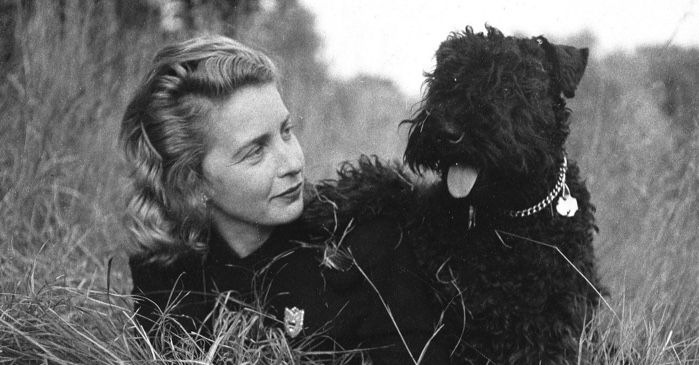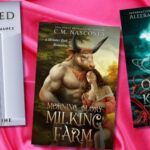
11 Facts About Margaret Wise Brown, Author of GOODNIGHT MOON
Women writers, particularly those of the past, are always subjects of fascination for me. By virtue of seeking success as authors during a time when to do so was all but forbidden, many of these women also tend to live life strictly on their own terms. As a result, these authors tend to be especially unique people. Margaret Wise Brown is no exception.
Like many others, I was treated to reading after reading of Brown’s beloved Goodnight Moon. It was a happy surprise when I discovered she and I attended the same college. The school has leaned into Brown’s success, focusing largely on Goodnight Moon with a theatrical adaptation of the picture book. But Margaret Wise Brown is far more than just Goodnight Moon. This was abundantly clear as I read Amy Gary’s In the Great Green Room: The Brilliant and Bold Life of Margaret Wise Brown. Drawing from interviews, diaries, articles, and more, Amy Gary brings the author of The Runaway Bunny to life. Read on to learn more about the woman behind the page.
11 Facts about Margaret Wise Brown, Author of Goodnight Moon
Brown Attended a Historically Women’s College
Located in Roanoke, Virginia, Hollins College (now Hollins University) also hosted Brown’s mother (and, later, Annie Dillard). Brown graduated in 1932, 90 years after the school was originally founded as Valley Union Seminary. At Hollins, Brown studied English and Psychology, both of which would later prove useful subjects in her work. She was also instrumental in the creation of the equestrian team, persuading the headmistress to add the program with the help of her legacy status and financial support from her family. The riding team remains a point of pride for Hollins today.
She Was Athletic
Hunting, fishing, swimming, running, boating, horseback riding — Brown did it all. While sometimes motivated by her figure, Brown loved to be active. Sports allowed Brown both to enjoy nature and the outdoors as well as build social relationships. In the prologue to In the Great Green Room, Gary writes, “She might walk alone, or run behind the group in silence. Most of the time, though, she found herself chatting effortlessly for six or seven miles…” At the time of her death, Brown was about to embark on a journey that would have provided ample outlets for her need for physical activity.
Her Repetitive, Rhythmic Style Was Heavily Influenced by Gertrude Stein
A deep admirer of the cultural influencer of her time, Brown was a close follower of Gertrude Stein’s. When attending a lecture by Stein, Brown picked up on her use of repetition. It both simplified and complexified meaning. She also noted Stein’s ability to convey complicated ideas with plain and direct language. Even without an acknowledgements note, it’s clear to see Stein’s unambiguous impact on Brown’s work, perhaps never more clearly than in her best-known book Goodnight Moon. Brown later had a hand in bringing Stein’s own children’s book The World Is Round to young readers’ shelves.
Brown First Worked as a Teacher
Armed with inspiration from Gertrude Stein and her background in English and Psychology, Brown went to work as a teacher when she wasn’t able to generate a steady income from writing alone. She taught at the Little Red Schoolhouse in New York City. The latter part of the day, she would study at the Bank Street Experimental School. Teaching hours offered a great fountain of information on what held children’s attention in a book, what vocabulary they had, and how they preferred to interact with a book.
She Emphasized the Importance of Sensory Details in Her Children’s Books
Drawing from her growing and extensive knowledge of childhood development, Brown was somewhat revolutionary in deliberately incorporating the senses into her stories. She felt that it was paramount to see the world from a child’s view. Brown enabled herself to be specific in her descriptions by visiting farms, docks, and other locations. Her attention to sensory detail is perhaps most evident in The Noisy Book, which sprang from an idea about a dog who, blinded by a cinder incident, goes about the city.
She Held Antisemitic Views
Despite her wonder and appreciation for the world around her, Brown was not immune to anti-Jewish propaganda that was especially prevalent around World War II. At a dinner with a friend and fellow creative Esphyr “Phyra” Slobodkina, she admitted she struggled with her bias after discovering Phyra was Jewish. While Brown felt guilt about the prejudice she entertained — which she seemed to believe may have been driven by the propaganda — and wanted to make amends, the damage was done.
Her Room Was a Real-Life Goodnight Moon Bedroom
An unlikely source of inspiration, Brown’s downstairs neighbor is inadvertently responsible for one of the most memorable rooms of fiction. Brown once dreamed of a room which incorporated her neighbor’s color scheme — “bright green walls in the living room accented by red furniture with yellow trim.” In describing the visual aspect she intended for Goodnight Moon, Brown recalled the decor and ultimately used it in her own living space. Soon, her apartment, too, had green and yellow walls and a red cover for her bed. Even the fictional room’s fireplace was inspired by one tended by Brown.
Goodnight Moon and The Dead Bird Were Both Inspired by Brown’s Own Childhood Experiences
Beyond the visuals of Goodnight Moon, Brown clearly drew from her childhood experiences for the words. As a regular bedtime ritual, Margaret and her sister Roberta would say goodnight to their belongings. Brown later had a dream of doing this, which ignited the idea for Goodnight Moon. Similarly, The Dead Bird fictionalized a time when Brown, her sister, and best friend discovered a dead bird. Brown determined a funeral was necessary, and the three carried out the sad event with solemnity and ceremony.
She Was Robbed on a Train to Rome
An avid lover of travel, Brown often saved up just to hit the road. On one trip, Brown headed from Switzerland to Italy to meet her collaborator for her book Fox Eyes, Garth Williams. On the train ride, Margaret was unfortunate to be sharing a compartment with a man who had ill-intent. After chloroforming the writer, the man robbed her, leaving only — and fortunately — her journals and manuscripts with her.
She Had Connections to the Carnegie and Rockefeller Families
In addition to a long-held connection with the Barrymores of actor Drew Barrymore’s ancestry — more on that relationship in the next fact — Brown also rubbed elbows with the Carnegies and Rockefellers. As a child, Brown and her sister enjoyed time on a farm belonging to her cousin, Dr. Marius Johnston, who married Nancy Carnegie (the daughter of industrialist Thomas Carnegie, who was brother to Andrew Carnegie of the Carnegie library legacy). As for the Rockefellers, Brown became engaged to James “Pebble” Stillman Rockefeller Jr., who she met at a dinner party as an adult. Before long, she realized she had met him before. Fifteen years his senior, Brown had played with the young Rockefeller as a child.
She Had Relationships With Men and Women
While Rockefeller was Brown’s last relationship, her longest — and perhaps most tumultuous — was that with writer Michael Strange. Strange, who adopted a masculine name and dress style but, to currently available knowledge, never indicated she was transgender, was previously married to and had a child with actor John Barrymore. Strange and Brown were in a near-constant struggle with each other, including involving Strange’s daughter Diana Barrymore, and the taboo of sharing their romance publicly didn’t help. The couple wrote coded messages to each other when apart and lived together for years. When Strange died tragically and restlessly from leukemia, Brown was at her side, against doctor’s orders. Later, Brown started a relationship with Pebble Rockefeller and, previous to Strange, Brown had dated men.
Although Brown authored many, many books, Goodnight Moon remains her best known work. Brown tried to publish for adults but was never able to break through. The enduring success of the picture book comes despite one librarian’s attempt to squash it and it remains a bedtime favorite to this day (except for this one Rioter’s tongue-in-cheek take).
But her legacy is so much more than the one story. Her influence on the verbal design of children’s books may often be overlooked, but is clearly massive. Although Brown died prematurely at 42 of a blood clot following an appendectomy (according to the biography; Wikipedia, citing a page on a now defunct Margaret Wise Brown website, reports it was the removal of an ovarian cyst), she left behind trunks and drawers full of writing, only some of which are discussed in Amy Gary’s book out of respect of privacy. Perhaps we will see further new publications from Margaret Wise Brown yet.
Find more interesting facts about women of literature with 10 Facts about Madame D’Aulnoy Who Coined the World Fairytale.















